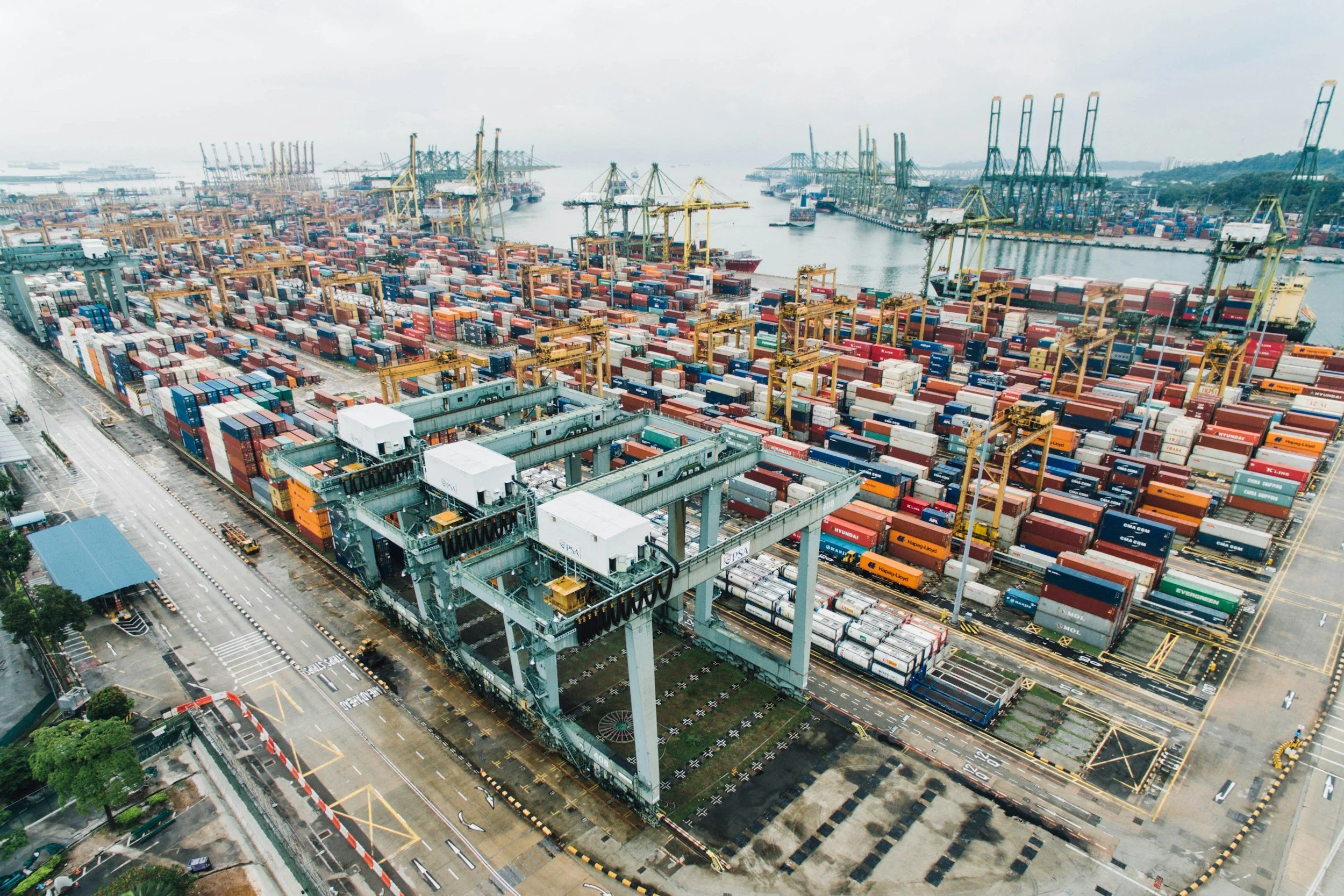The IMO got the engine started for clean maritime. Now the EU and UK must steer the ship.
Last month the world came together at the International Maritime Organization (IMO) to reach a historic agreement on measures to cut international shipping’s greenhouse gas emissions. With the final agreement failing to boost the green hydrogen fuels shipping needs to decarbonise, it now falls to states and ambitious industry players to steer international shipping to net zero.
IMO measures: not enough to decarbonise shipping
Even up until the final days of negotiations, there was strong support from a majority of IMO member states from truly ambitious climate regulations. Championed by Pacific Island, African and Caribbean states, with support from others including the UK, the most ambitious package on the table included a universal levy on all GHG emissions and a stringent fuel standard.
Together, these two components would have meaningfully incentivised the transition away from fossil fuels and unlocked a substantial and stable stream of revenues to support climate vulnerable states. This approach would also have boosted uptake of the fuels with the greatest potential to reduce emissions through rewards, investment in development, and narrowing the price gap with fossil fuels.
However, the measures ultimately agreed fall far short of these ambitions. Not only are they not aligned with the goals of the Paris Agreement, but they put the industry on a trajectory that doesn’t match up with the IMO's own 2023 Strategy for reducing emissions to net zero by 2050.
So what’s wrong with the agreed measures? The system for buying and selling emissions credits, introduced in place of a levy, fails to capture all the sector’s emissions and the price will be set by market dynamics. As a result:
Penalties for not complying with the net zero framework – set at $100 per tonne of CO2 for exceeding direct compliance targets and $380 for base compliance targets - are insufficient, and will not raise enough revenue to ensure a just and fair transition.
The incentive to move away from fossil fuels is much weaker than it could have been.
The funds that will be available to incentivise the use of the most sustainable fuels – those produced using green hydrogen – will be fewer and less predictable. This dilutes the de-risking effect on investment that the measures could have had.
There are also concerns that the measures will incentivise ships to use biofuels and potentially even LNG, two non-solutions that risk significant biodiversity and climate impacts.
Despite their climate credentials, green hydrogen-derived fuels, struggling to compete against cheap fossil and biofuels, are in need of a leg up. The majority of planned European e-fuel projects for shipping have not yet reached final investment decision, in large part due to high risk premiums on investment.
The IMO measures could have provided exactly what these projects need to get off the ground: strong and certain policy. Now the IMO has failed to deliver this, we need to see policy gaps plugged by governments such as the UK and EU, and leading companies taking decisive action.
What can the UK do to decarbonise shipping?
The UK and EU are well positioned to take the baton and implement ambitious shipping decarbonisation policy. But what would global climate leadership on shipping look like?
The UK has long advocated for a just and equitable agreement at the IMO, ambition that shone through as well in its Maritime Decarbonisation Strategy published shortly before the decisive negotiations. This long-awaited strategy aligned the UK with the highest level of the IMO's emission reduction target, and committed to including domestic shipping emissions in the UK emission trading system (ETS).
The strategy also announces intentions to consult on introducing a domestic fuel regulation. This could look something like the FuelEU Maritime regulation or the UK’s own SAF mandate, both of which set incrementally increasing targets for alternative fuel use. Another positive sign was that the strategy highlighted the importance of coordination between all actors, across government, regulators, international organisations and the maritime industry, for making net zero shipping a reality.
Despite the strategy’s strengths on domestic shipping, its capacity to cut down the UK’s contribution to international shipping emissions relies heavily on the IMO agreement, undecided at the time of its publication. That the IMO failed to agree strong measures means the strategy already falls short of the level of ambition it set out.
In light of the IMO agreement, the Maritime Decarbonisation Strategy needs to be complemented with robust action. To do so, the government must:
1. Extend the scope of the maritime ETS to cover international shipping.
The Maritime Decarbonisation Strategy was right to include domestic emissions in the ETS. However, without a global universal emissions levy from the IMO, the UK must now commit to extending the ETS to cover 50% of emissions from international voyages that pass through UK ports.
2. Set targets for maritime green hydrogen fuel uptake.
It's great to see the government committing to a domestic fuel regulation, but this policy needs to drive the uptake of green hydrogen fuels including e-fuels, and disincentivise the use of non-solutions like biofuels and LNG.
3. Introduce stringent emissions monitoring and accounting methods.
It’s critical that all environmental impacts of conventional and alternative fuels are factored in when designing clean maritime policy. That’s why we need to see a robust and transparent monitoring, evaluation, verification and reporting system introduced, which accounts for a fuel’s full lifecycle emissions.
4. Continue to push for ambition at the IMO.
The work at the IMO isn't finished. The UK must continue working towards: a more stringent zero and near zero (ZNZ) fuels definition; a targeted reward mechanism for e-fuel adoption; and a robust lifecycle analysis methodology to account for all climate impacts, including from indirect land use change in biofuel production.
What can the EU do to decarbonise shipping?
The EU also has a major role to play in driving shipping to net zero. Beyond climate benefits, implementing policies to set the bloc up as a leader in maritime decarbonisation would also advance its Clean Industrial Deal competitiveness goals. Europe has a green hydrogen and clean maritime industry-in-waiting, with a potential shipping e-fuel production capacity as great as 1.06m tonnes of oil equivalent by 2030, enough to meet FuelEU Maritime targets.
Existing legislation, namely FuelEU Maritime and the maritime ETS, constitutes a strong start. Now, key upcoming policy proposals could be leveraged to further the EU’s maritime decarbonisation ambitions. To do so, the EU must:
1. Introduce a financial support mechanism for e-fuel producers through the Sustainable Transport Investment Plan (STIP).
The STIP, slated to arrive later this year, is the perfect opportunity to introduce financial support for e-fuel producers, using revenues from the ETS to de-risk investment and unlock finances for scaling production.
2. Expand the ETS and dedicate reviews to funding e-fuel development.
The EU has already taken the important step of including international maritime emissions in its ETS, but must go further by expanding the scope to include ships under 5,000GT. A portion of the additional revenue must also be re-invested into advancing the maritime energy transition.
3. Ensure that FuelEU Maritime’s targets are strengthened and made legally binding.
The demand signal for e-fuels needs to be strengthened by introducing binding targets for the uptake of green hydrogen fuels, increasing year on year.
4. Push for greater ambition at the IMO in line with the objectives of the Clean Industrial Deal.
Like the UK, the EU must work to further ambition at the IMO on the same issues as above.
Now is not a time to dwell on the shortcomings of the IMO’s agreements – nor see its outcomes as an insurmountable limit on global ambition. Rather, we must take what was ultimately a momentous achievement and view it as a starting point for action on maritime decarbonisation. There are few authorities better poised to lead this process – and reap the benefits that it offers for the climate and their own priorities – than the UK and EU.
The SASHA Coalition wrote a letter to the European Commission and EU Council Presidency, and a letter to the UK government to urge them to adopt these policies.












